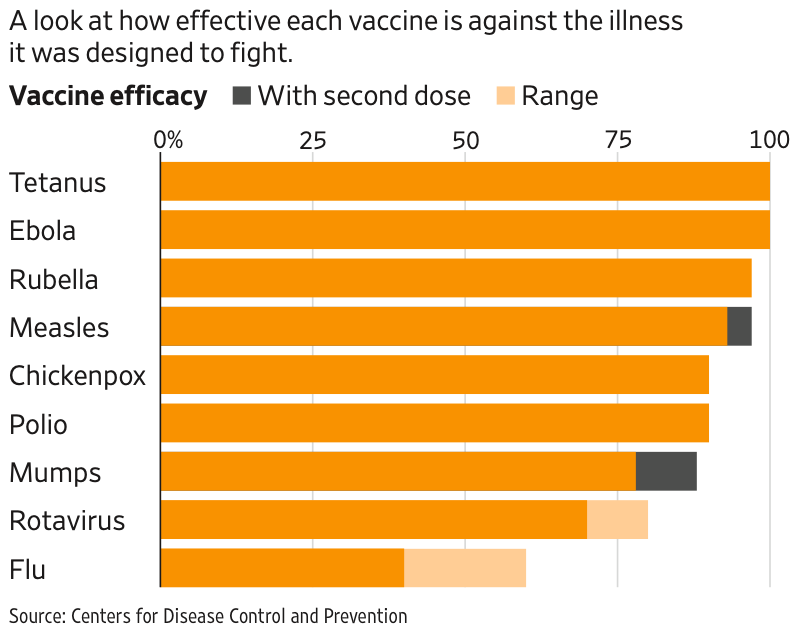信息技术与新型全球化

Every newspaper picture editor knows the score. If it’s a story about trade, it gets illustrated with a photo of a gargantuan cargo ship piled high with containers. And every amateur apostle of the free market, along with a few government ministers, knows that all you need to do to win an argument about trade is to cite the theory of comparative advantage and you’re pretty much done.
任何一位报纸图片编辑都知道这个套路。如果这是一篇有关贸易的报道,与之搭配的图片就应该展现一艘巨大的货轮,船上集装箱高高堆起。任何一位自由市场的业余倡导者以及一些政府部门的部长也都知道,要想在有关贸易的争论中取胜,你只需要引用一下比较优势理论。
Much public understanding about trade and globalisation is either scant or trapped in models and realities that owe more to the 20th century, and sometimes the 19th, than to today. At a moment when the downsides of trade and globalisation are cited as causes of Brexit, the election of Donald Trump and the rise of rightwing populism in Europe, getting the analysis right is a matter of rather more than academic interest.
公众对贸易和全球化的认识要么匮乏,要么陷在模型或实例中走不出来,而且这些模型或实例通常更多反映的是二十世纪、有时甚至是十九世纪的情况,而非当下的现实。鉴于贸易和全球化的负面影响在当下被用作解释英国脱欧、唐纳德•特朗普(Donald Trump)当选美国总统以及右翼民粹主义在欧洲兴起的原因,进行正确的分析就不仅仅是学术界感兴趣的问题了。
Enter, with exemplary timing, this excellent book by Richard Baldwin, an academic with a strong applied focus, who combines a professorship at the Graduate Institute in Geneva with the presidency of the Centre for Economic Policy Research, a renowned network of economists.
这本来自理查德•鲍德温(Richard Baldwin)的杰作对上市时间的把握堪称典范。鲍德温是一位高度重视研究现实问题的学者,他是日内瓦国际研究所(Graduate Institute in Geneva)的教授,同时还是经济政策研究中心(Centre for Economic Policy Research)的主席。后者是一个颇具声望的经济学家联盟。
For its time and as far as it goes, the 19th-century theory of comparative advantage is fine. Countries specialise in what they are relatively good at: high-wage and capital-rich 19th-century Europe did higher-technology industry, poorer countries such as India did agriculture and small-scale manufactures. Thus, given the productivity gains in manufacturing, began the “Great Divergence” that meant the richer countries pulling away from the rest.
就其所产生的年代及其所讨论的深度而言,诞生于19世纪的比较优势理论是很好的。国家应专注于自身相对擅长的领域:例如十九世纪时高工资、资本充裕的欧洲国家就大力发展了技术含量较高的工业,印度等收入较低的国家就主要发展农业和小型制造业。因此,在制造业生产率提升的影响下,“大分裂”(Great Divergence)发生了,而这意味着高收入国家相对于世界其他地区的领先优势拉大。
But Baldwin’s analysis notes this was only one form of globalisation. His framework posits three “cascading constraints” that hold back the globalisation of markets, namely the costs of moving goods, ideas and people. Initially, all were bundled together: early societies stayed where they were, passed down information to the next generation and ate what they grew. The first wave of globalisation that created the Great Divergence expanded markets via the falling cost of transporting physical goods, thanks to the steamship and the railway.
但鲍德温的分析指出,这只是全球化的一种表现形式。他的分析框架提出了三种阻碍市场全球化的“逐层递进限制”,即货物运输成本、观念传播成本以及人员流动成本。最初这三种成本是混合在一起的:在早期社会形态中,人们几乎不怎么离开居住地,把信息传递给下一代,吃的也是自己种植生产的食物。导致了“大分裂”的第一波全球化浪潮通过降低实体货物运输成本拓展了市场空间,这主要归功于蒸汽船和铁路的出现。
But the globalisation that began around 1990 and led to the astonishing rise — in fact, re-emergence — of China and other emerging market giants reflected a relaxation of the constraint on ideas. Digitisation and communications allowed the monitoring and control of supply chains that had previously been bundled together in one economy to be split up into dozens or hundreds of stages, which were then allocated to producers around the globe according to efficiency and cost.
而始于1990年前后、推动了中国和其他主要新兴市场经济体崛起——更准确的说是重新崛起——的那一轮全球化浪潮反映了限制观念传播因素的放松。数字化以及现代通讯使得监督控制供应链的过程可以分散化,将过去集中在一个经济体境内的生产线分拆为数十道甚至上百道工序,并根据成本和效率指标分发给世界各地的生产商。
Baldwin describes very well how this changes the simple country-by-country focus of comparative advantage, with some real-world case studies. South Korea, for example, shifted from its original model of operating an entire car industry at home to setting up an international automotive supply chain. With production processes being broken up into individual pieces and tasks, the sophistication goes to finer degrees. Some groups of workers, who can provide the necessary skills for the cheapest rate, prosper; some languish. Manufacturing sectors in rich countries require workers with very different skills, historically more typical of the service sector, such as management and design.
鲍德温出色刻画了这一新情况是如何改变各个国家单纯侧重于本国比较优势的做法的,并对一些真实案例进行了讨论。例如,韩国改变了最初在国内运营一整条汽车生产线的模式,转而建设国际化的汽车供应链。随着制造流程被打碎成了一个个单一任务,复杂的生产过程进入了一个更加精细的阶段。部分工人群体发展壮大——他们能以最低的工资提供必要的技能;部分群体逐渐没落。高收入国家的制造业部门需要工人具备非常不同的技能,例如管理和设计能力,而过去对这些技能的要求常见于服务业。
Just as South Korea has changed, so newly industrialising countries are less keen on setting up entire industries at home and instead try to insert themselves into global supply chains. Sometimes this means changing, not just exploiting, their comparative advantage. Baldwin cites Vietnam, which joined Honda’s supply network by starting to manufacture motorcycle parts using production and technical expertise imported from the parent company. Thus Vietnam’s existing advantage of low-cost labour joined with the management and technical know-how of Japan to create a new specialism. Those economies that succeed can grow very quickly, producing a “Great Convergence” of poor and rich that provides the book’s title.
正如韩国的转变一样,其他新兴工业化国家也不再那么急于把整个产业都布局在国内,而是试图引导本国企业融入全球供应链。有时这意味着这些国家需要改变自身的比较优势、而不仅仅是利用。鲍德温举了越南的例子,该国加入了本田(Honda)的供应网络,开始运用引进自本田母公司的生产技术制造摩托车零部件。由此,越南现有的低成本劳动力优势与日本的管理和技术经验结合在了一起,创造出了一种新的专长。那些获得成功的经济体能以很快的速度增长,进而导致了穷国和富国之间的“大融合”(Great Convergence),这也正是鲍德温这本书的书名。
This framework explains a lot about current tensions around globalisation. For one, the stricken manufacturing towns of the American Midwest, many of whose poorer inhabitants switched to voting for Donald Trump, have experienced first-hand what it feels like rapidly to become a redundant link in a global value chain. (Much of this also owes to changing technology, not trade, but as the US trade representative Michael Froman is fond of saying, no one gets a vote on technology.)
这个框架能从很多方面解释当前围绕全球化的紧张氛围。其一是,美国中西部地区受冲击的制造业城镇——这些地方的大量低收入居民将选票投给了唐纳德•特朗普——亲身感受到了在全球价值链中迅速变得多余的滋味。(这种变化在很大程度上是由技术进步而非贸易导致的,但正如美国贸易代表迈克•弗罗曼(Mike Froman)喜欢说的那样,人们无法对技术进行投票。)
Second, it shows why modern trade deals, such as the proposed Transatlantic Trade and Investment Partnership between the US and EU, are centred on rules protecting patents and copyrights, and allowing foreign corporations to sue governments if they feel their investments are being expropriated. Multinationals are less concerned with goods tariffs, which are now generally low and belong to an earlier era of trade governance, than they are with trying to protect the specialist knowledge on which their global supply chains depend.
其二是,该框架展现了现代贸易协议——例如美国与欧盟之间仍在谈判的《跨大西洋贸易与投资伙伴关系协定》(Transatlantic Trade and Investment Partnership)——为何把重点放在了保护专利和版权的规则,以及允许外国企业在认为自身投资被侵吞的情况下起诉政府的规则。比起目前总体处于较低水平、属于贸易管制时代之物的商品关税,跨国公司如今更关心的是保护自己的全球供应链所依存的专业知识。
It also foresees the future of globalisation once technology has relaxed the third constraint, the movement of people. The easier it becomes to manage processes from afar — improved videoconferencing, remote-controlled robots — the more virtual immigration can substitute for actual and the specialisation of global supply chains proceed even faster.
该书还预测了在科技发展放松了对人员流动的限制之后全球化的未来走向。远程管理生产流程变得越容易——例如依靠更好的视频会议技术或远程操纵机器人——虚拟人员迁移就越是能够代替实际迁移,全球供应链将以比以往更快的速度走向专门化。
Baldwin’s work seems likely to become a standard, perhaps indispensable, guide to understanding how globalisation has got us here and where it is likely to take us next. There can be few more vital subjects today that will benefit from this sort of clear and comprehensive exposition.
鲍德温的这本著作很可能将成为帮助我们理解全球化如何带领我们走到现在、以及下一步将引领我们走向何方的标准读物,甚至可能是必读之书。就当前而言,在能够受益于这种清晰而全面的论述的议题中,没有几个能比全球化议题更重要了。
The Great Convergence: Information Technology and the New Globalization, by Richard Baldwin, Harvard University Press, RRP£22.95/$29.95, 344 pages
《大融合:信息技术与新型全球化》(The Great Convergence: Information Technology and the New Globalization),理查德•鲍德温著,哈佛大学出版社(Harvard University Press),建议零售价22.95英镑/29.95美元,344页
Alan Beattie is the FT’s Brussels leader writer
艾伦•贝蒂(Alan Beattie)是英国金融时报驻布鲁塞尔主笔
相关阅读
-

任何一位报纸图片编辑都知道这个套路。如果这是一篇有关贸易的报道,与之搭配的图片就应该展现一艘巨大的货轮,船上集装箱高高堆起。...
-

光生物安全性测试仪idr300-PSL是bentham为灯具光源的光生物安全性测量分析设计的光生物安全性测量仪器,帮助制造商或评估机构*快地获得灯具光源的光生物安全性数据。...
-

法科学生应具备的基本知识(图)...
-

南洋理工大学——医学院哲学博士 - 医学LKCMedicine研究型博士项目招收来自不同背景的学生--自然科学、医学、社会科学和工程学,并让他们...
-

学习法律知识心得体会(一):在学习法律基础的过程中,我有一点体会,就是必须要自觉维护社会主义法律权威。社会主义法律权威的树立,既有赖于国家的努力,也有赖于公民个人的努力。...
-

新华网北京3月4日电(记者 王莹)4日,360新闻搜索提供的数据显示,“两会热搜词”的榜单中,两会民生热点、人大新闻发布会、境外媒体关注两会等话题受到网友关注...
-
《法制报告心得12篇》由心得体会网发布,主要内容:你知道什么是心得体会吗?心得体会通常是指一种读书、实践后所写的感受性文字,那么,当我们在写心得体会要注意...
-

了解民政新闻资讯 ,尽在每周媒体关注。“一周新闻眼”栏目,为您盘点社会关切的民生热点话题,带您回顾媒体关注的民政热门资讯。刚刚过去的1月28日至2月5日这一周,...
-
这才是中国的黑科技,50年前就独步全球,被称人类史上的奇迹!
这才是中国的黑科技,50年前就独步全球,被称人类史上的奇迹!...
-

世界进入新轨道。...
-

雄安新区2018年10月17日电 /美通社/ -- * 城市的未来是怎样的? * 更加智能,更加立体,更加模块化? * 是更加温暖和人情味,还是更加冰冷和科技化?...
发表评论
版权声明:本文内容由互联网用户自发贡献,该文观点仅代表作者本人。本站仅提供信息存储空间服务,不拥有所有权,不承担相关法律责任如发现本站有涉嫌抄袭侵权/违法违规的内容,请发送邮件举报,一经查实,本站将立刻删除。

